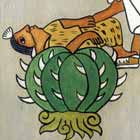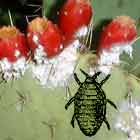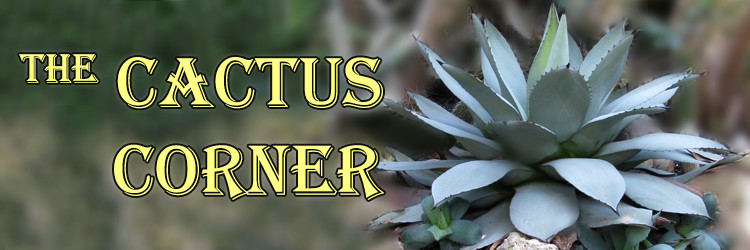History of Cacti & Succulents
Origin of the Names
The word Cactus comes from the Greek word kaktos, used in classical Greek for a species of spiny thistle, and was used as a generic name for all Cactaceae native to the Americas. The Succulent is so named for these plants amazing water retaining ability. They are diverse plants which can tolerate arid conditions or live in rainforests and there are well over 2,500 species.
Ancient History

Cacti and Succulents have been known about since the time of the Aztecs in Mexico and Incas of Peru. They were an important symbol to them in the forms of healing, cosmetic products and divination, to feel at one with their gods. Tenochtitlan (the earlier name of Mexico City) means "place of the sacred cactus". Representations of the plants could be seen as decorations on their buildings, pottery and other discovered artifacts. Even today the coat of arms of Mexico has a cactus design on it.
The Little Bug

Little white bugs called Cochineal that thrive on the Opuntia (Prickly Pear) cacti were harvested by the Aztecs and Incas, from the paddled branches. The bugs were removed from the plant, ground up and made into a lovely red dye that was used for dyeing cloth. Many thousands of years later, in 1788, the tradition of using Cochineal was continued in Australia. Even today, Cochineal dye has made a come back and is considered non-toxic and non-carcinogenic, when compared with today’s man-made dyes. (see Cochineal)
European Discoveries

Real scientific interest was not shown in the Cactus until the 14th & 15th centuries. Christopher Columbus brought the first Melocactus to Europe. The plants which he discovered are considered “New World Plants” because they come from the Americas. However, Cacti and Succulents can be found on every habitable continent. “Old World Plants” such as Aloes can be found in Africa.
After the discoveries made in the Americas and other Continents in the 18th century, Cacti and Succulents began to be prized by wealthy collectors and cultivated as a curiosity. This can be clearly seen in Carl Spitzweg paintings, “The cactus-friend” circa 1856 and “The cactus-lover” circa 1850.
Present Day
Today Cacti and Succulents are still prized by collectors, and are often used as points of interest in a garden. In addition, as in ancient times, they are now making a reoccurrence in pharmaceuticals as well as in ingredients in the foods we eat today.
It is amazing how these plants thrived and were utilized in ancient cultures for thousands of years, yet only in the last few centuries have we begun to understand their importance.
More information can be found here:
One Final Note of Interest:
Most people might wonder, "What is the difference between a Cactus and a Succulent?"
A saying that is often used by plant growers is, "Virtually all cacti are succulents, but many succulents are not cacti." This means that all true cacti have a fleshy body filled with moisture, but unlike cacti, the true succulent does not possess spines or areoles. In most cases a Cactus does not have branches or leaves. Some plants within these families can look similar and there are always exceptions, but this is a good rule to follow.






